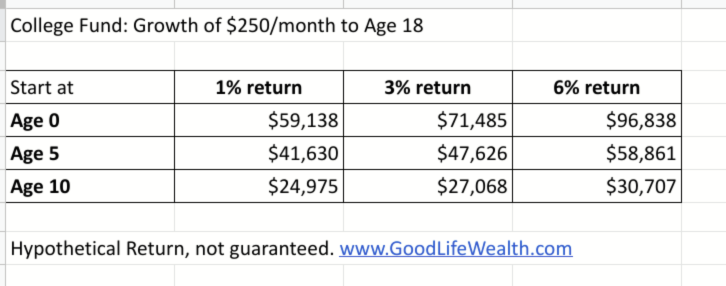If you’re thinking about your estate planning, you might ask Do I need a Trust? And to answer that question, we have to first ask why you might want a trust. There are many types of trusts and it is not as simple as a generic Yes or No. Many people do not need a trust, but for other families it may be valuable or even essential.
In this article, we are going to talk about the reasons for wanting or needing a trust. If you are clear on the reasons, you can help your estate attorney make sure you have the best type of trust for you. These can be slightly different from state to state. Or you can determine that you don’t need a Trust to accomplish your Estate planning objectives. The taxation of trusts is often overlooked and sometimes misunderstood, even by attorneys.
Every small town offers estate planning, but if you have a complex situation, I would suggest you seek out an attorney who is board certified in Estate Planning. They are often better up to date with all the trust pros and cons for your needs. You don’t see your family doctor for a hip replacement, you see a specialist. Do the same for your Estate Planning.
Avoid Probate
One of the most common reasons to establish a trust is to avoid having to go to Probate Court to distribute your assets upon your death. Probate can take a year or longer in some states and has a number of costs, including court fees and attorney expenses. A Revocable Living Trust (RLT) can sidestep the probate process, potentially saving some time and expense for your heirs.
These types of trusts are generally fairly harmless. But they are not always necessary. Remember that some assets already do not go through the probate process. Non-probate assets include:
- Joint accounts with rights of survivorship
- Retirement accounts (IRAs, 401k, 403b, etc.) with a named beneficiary
- Life Insurance and Annuities
- Transfer on Death or Payable on Death accounts
If you have a house, car, boat, etc., with a title or deed, those assets MUST be retitled so that the trust owns the asset. Otherwise, those assets will still have to go through Probate. So, unfortunately, what often happens is that someone has a RLT but has one or two items which were not titled correctly, so they still have to go to Probate for those items. Please note that real estate goes to probate in its home state. So if you have a home in Texas and one in Colorado, you would need to go through Probate in both states. That is also a good reason for a RLT.
Spendthrift Trust
Another reason to have a trust would be to have a Spendthrift provision. A “Spendthrift” is someone who spends in an irresponsible way. Sometimes that may mean a gambling, alcohol or drug problem, or a mental illness. If you are concerned that one of your heirs is going to waste the money and squander their inheritance, than you may want a trust. The trust can stipulate how much a beneficiary can withdraw or present them with an allowance rather than a lump sum. Or you can establish a trustee to oversee the distribution of money to ensure that the beneficiary is doing okay.
Family Considerations
There are other family reasons for establishing a trust. First, consider minors. If an minor is a beneficiary of an estate, they cannot receive the money. Instead, the probate court will appoint a trustee, based on their rules. Then when the child reaches the age of majority, 18 or 21 depending on the state, they will have access to 100% of the money. You might prefer a trust to hold this money and provide access at a later age or for specific reasons (such as education, medical, buying a first home, wedding, etc.).
Second, a trust may help keep money in the family in case of divorce. You may love your kids but not be certain about their spouses or future spouses. Some states, like Texas, can preserve inheritance money as a separate asset, not subject to division in a divorce. Other states do not. The risk is that the funds are commingled or squandered. So a trust may again be appropriate in these situations. Half of all marriages are ending in divorce and that may well include your kids.
Third, you may have future grandchildren or great-grandchildren. A trust could provide for a longer inter-generational transfer to unborn generations. It might also be helpful in preventing some heirs from deciding not to work and to spend the inheritance on lavish cars, houses, and vacations. Many successful entrepreneurs worry about how an inheritance could de-motivate their heirs from pursuing their own careers. Why go to Medical School if you are already a multi-millionaire at 18? A trust can set some rules.
Fourth are Special Needs Trusts. If you have an heir who has a physical or mental disability, you may want to establish a Special Needs Trust. Generally, these trusts are created to provide a supplemental benefit while still allowing the beneficiary to qualify for Medicaid or state funded care.
Fifth, What if you are remarried and have a blended family with children from previous marriages. You may want to leave income to your spouse but leave the remainder or principal to your children. Otherwise, there is potentially a possibility that your spouse could remarry after you are gone or decide to cut your children out later. One solution is a Qualified Terminal Interest Property Trust, called a QTIP.
Estate Tax and Asset Protection
We wrote extensively last week about the Estate Tax and how the exemption is set to be cut in half in 2026. A lot of families who are not thinking about the Estate Tax could be subject to a 40% tax in the future. And that risk is a very real reason to consider an Irrevocable Trust today – to lock in the very generous Estate and Gift exemption we have in 2023 through 2025. Today, a couple could put in almost $26 million into a Trust, without gift taxes, and avoid a future estate tax, even if Congress later lowers the Estate Tax Exemption.
Moving assets out of your name and into a trust could also protect those assets from creditors. If you are concerned about a lawsuit or bankruptcy, moving assets out of your name may be a good idea. For some professions and businesses, this is a very real risk.
Trust Taxation
Be sure to ask and understand how any proposed trust will be taxed in the present and future. Taxes can be misunderstood by families who thought a Trust was doing a great thing for heirs. Some trusts are pass-through entities, where the income taxes are payable by the grantor or the beneficiaries.
Other trusts are their own entity and have to file their own tax return. And this type, you need to be very careful. Trust and Estate tax rates are much worse than individual tax rates. Both trusts and individual have the same top rate of 37% in 2023. But the Trust reaches that 37% tax rate at only $14,451 of income versus $578,126 for an individual (2023).
Billionaires don’t care about trust tax rates because they and their heirs are always going to be in the top tax bracket. To them, the trust tax rate doesn’t matter. But for most beneficiaries, there will be a large increase in taxes if the trust is a taxable entity.
For example, consider $100,000 ordinary income to an individual versus a Trust (2023):
- Individual taxpayer (after $13,850 standard deduction) = $14,261 tax
- Trust with same income = $35,144 tax
It may be that the other goals: spendthrift, family, estate planning, etc., outweigh the additional tax costs. But you should fully understand what the taxes will look like while you are alive and also for your heirs.
Two other questions to ask about taxes before entering a trust:
- Will my heirs receive a step-up in cost basis if the trust owns this asset when I pass away? In many cases, this answer alone may dissuade you from certain types of trusts.
- What will happen if I name the trust as beneficiary of my retirement account or life insurance policy? In some cases, certain benefits may be lost if a trust is a beneficiary rather than a natural person.
Conclusion
Do I need a trust? To answer that question, we’ve outlined two areas of focus. First, be very clear about why you need a trust. Is it to avoid probate, for a spendthrift, for family reasons, to reduce estate taxes, or protect assets from creditors? These require different approaches. Second, be sure you understand how the trust will be taxed today and in the future. Some are simple and some are complex and can be costly for your heirs. There are no tax-free trusts, someone is always liable for taxes and you need to understand how this works.
Every family should have a Will and related estate planning documents: a Durable Power of Attorney, a Physicians’ Directive, and Health Care POA. Keep these up to date, especially if you have a change in your beneficiaries, executors, or trustees. If you don’t have a specific need for a trust, it’s quite possible that you don’t need one. I am not of the opinion that everyone must have a trust. In many cases, the majority of their assets can pass outside of probate, just through beneficiary designations or TOD accounts. There are pros and cons to that approach, too.
If you do establish a trust, please share it with your financial advisor. It may even be beneficial to set up a meeting or call with you, your attorney, and your financial planner to ask questions about account titles, beneficiary designations, and taxes. That way, we can work together to make sure your estate plan will work as intended. Our Wealth Management process is often planning for several generations and not just for this year or even for just your retirement. If you are thinking about how your money can benefit your family long-term, let’s chat.














